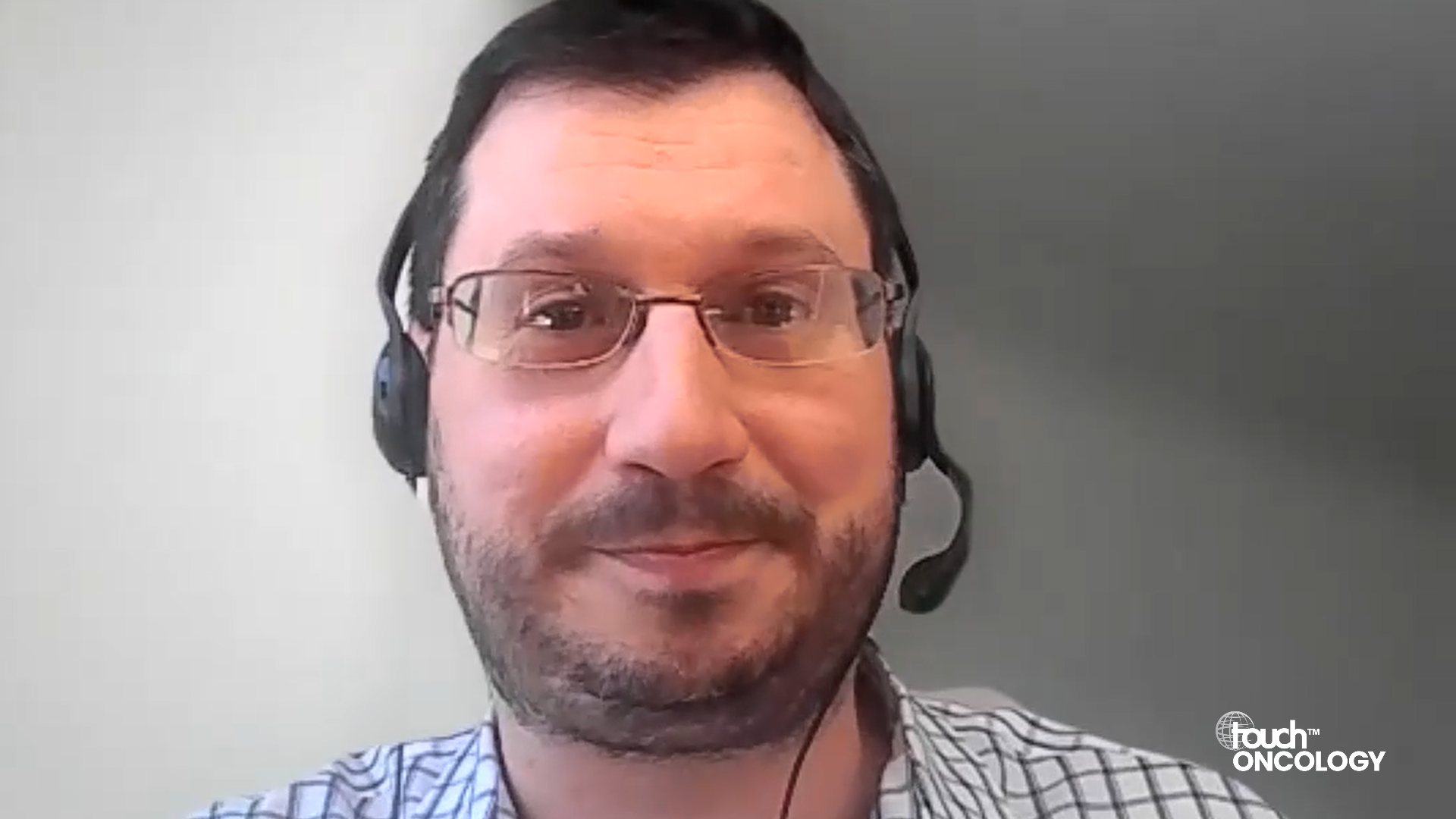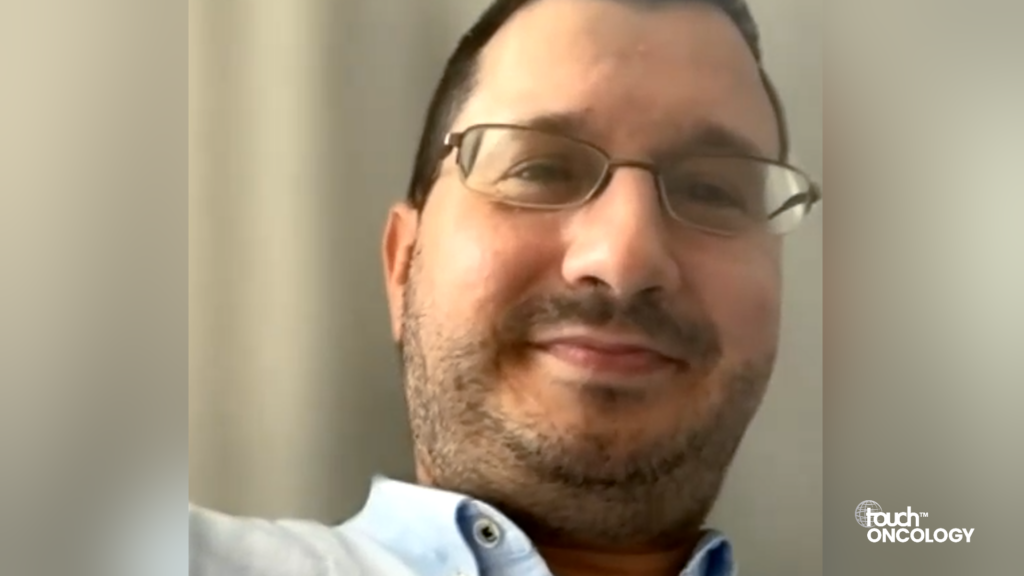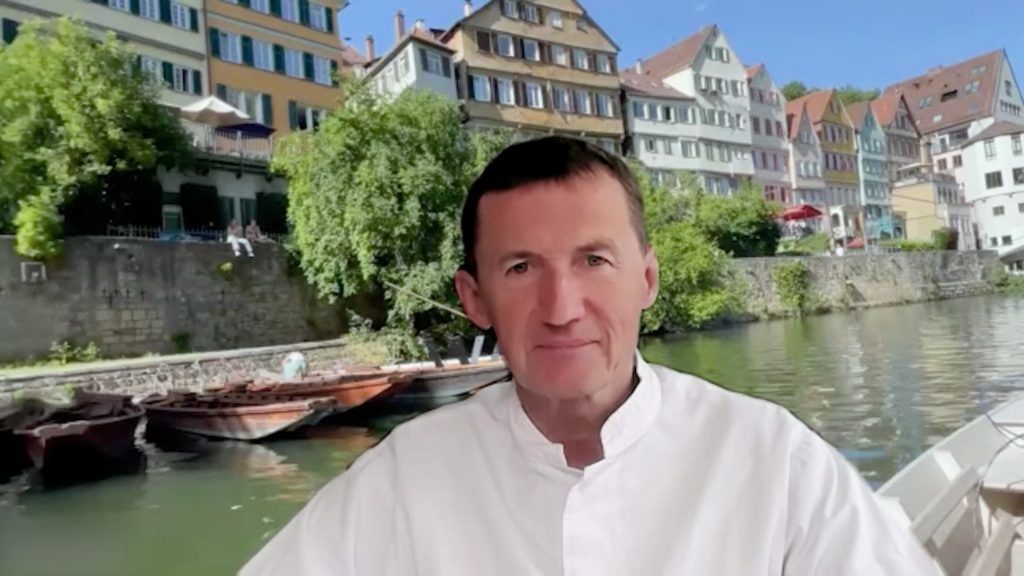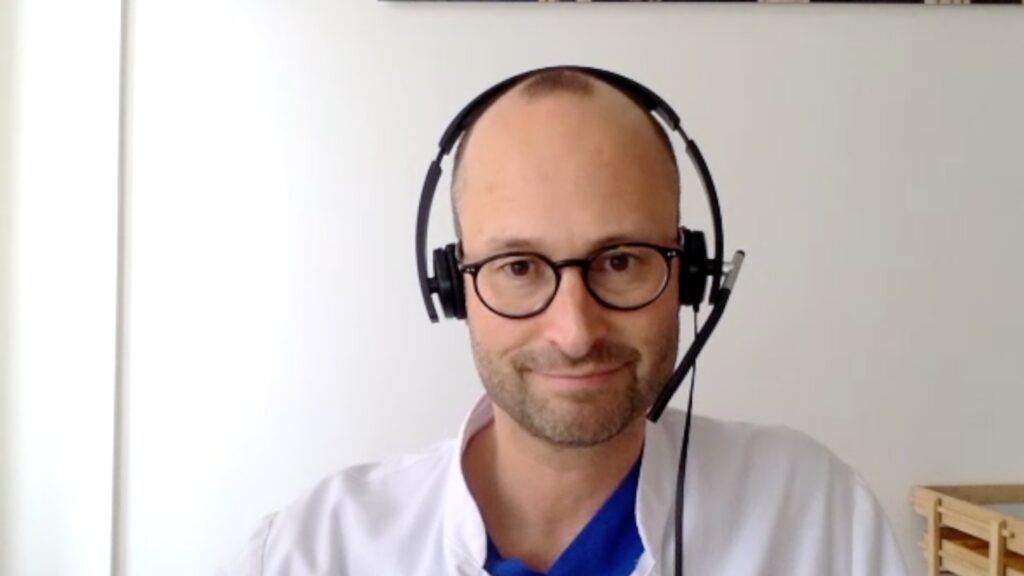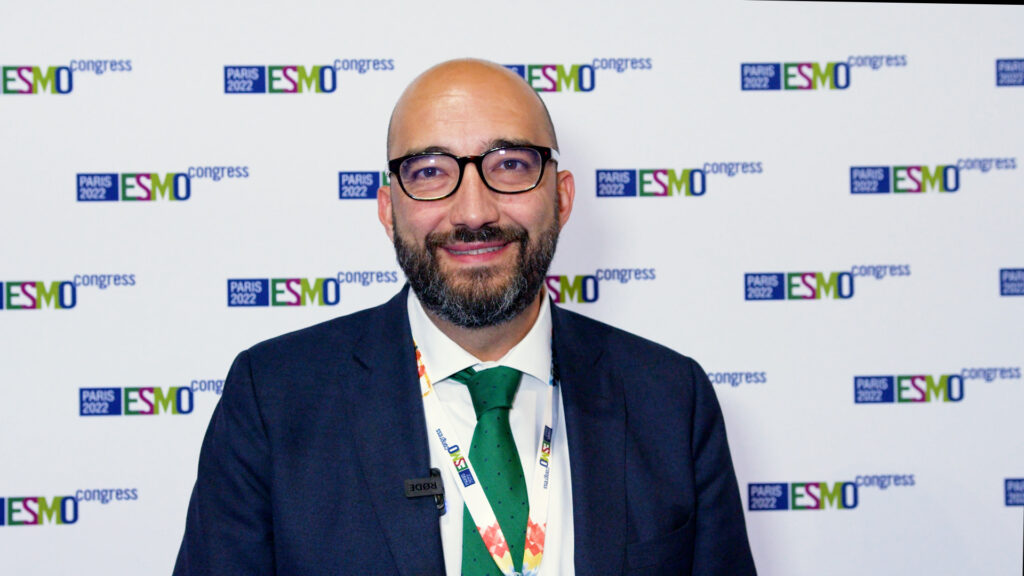The NIAGARA trial evaluated the combination of durvalumab (D) with neoadjuvant chemotherapy (NAC) followed by radical cystectomy (RC) and adjuvant durvalumab in cisplatin-eligible patients with muscle-invasive bladder cancer (MIBC). A total of 1063 patients were randomized to either receive durvalumab + NAC + RC followed by adjuvant durvalumab or NAC + RC alone. The study showed a significant improvement in event-free survival (EFS) and overall survival (OS) in the durvalumab arm compared to NAC alone (EFS hazard ratio [HR] 0.68; OS HR 0.75). The safety profile was consistent across both study groups, and the addition of durvalumab did not interfere with the completion of RC.
Prof. Thomas Powles (Barts Cancer Institute, London, UK) discusses findings from the NIAGARA and how they may impact clinical practice.
The late-breaking abstract, ‘Durvalumab with Neoadjuvant Chemotherapy and Radical Cystectomy in Muscle-invasive Bladder Cancer’ (LBA5) was presented at the European Society of Medical Oncology Congress 2024 on 13–17 September 2024 in Barcelona, Spain.
Questions
- What was the rationale for combining durvalumab with neoadjuvant chemotherapy and radical cystectomy in the treatment of muscle-invasive bladder cancer?
- How did the addition of adjuvant durvalumab affect event-free survival (EFS) and overall survival (OS) in these patients?
- Were there any notable differences in the safety profile between the two treatment arms?
- How did the completion rates of radical cystectomy compare between the two treatment arms?
- Could you explain why the pathologic complete response (pCR) analysis was not statistically significant despite the positive event-free survival and overall survival outcomes?
Disclosures: Thomas Powles has no financial or non-financial conflicts of interest to declare in relation to this video.
Transcript
My name is Tom Powles. I’m a professor at Barts Cancer Centre in London.
1. What was the rationale for combining durvalumab with neoadjuvant chemotherapy and radical cystectomy in the treatment of muscle-invasive bladder cancer?
So perioperative durvalumab – that’s durvalumab given with neoadjuvant chemotherapy followed by cystectomy, and then 8 cycles of durvalumab making a total of 1 year of durvalumab – is a regime which has a strong rationale.
The adjuvant period, we know is associated with progression-free survival advantage, but we’ve not seen an overall survival advantage in that environment. The neoadjuvant period is an area which is gaining momentum, and we know from other cancers, particularly melanoma, that it may be that because more tumour cells are present at that time, there are more neoantigens, it may be that immune therapy works better in the neoadjuvant period than in the adjuvant period.
We feel in the urothelial cancer community, or certainly I do, that at the moment only 2 or 3 months of immune therapy is probably not long enough. We know that from metastatic disease, and so giving this combined perioperative period before and after surgery feels attractive.
2. How did the addition of adjuvant durvalumab affect event-free survival and overall survival in patients included in the NIAGARA trial?
So patients in the NIAGARA trial had muscle-invasive urothelial cancer T2-T4a, and they were treated in the control arm with 4 cycles of gemcitabine and cisplatin followed by cystectomy. In the study arm, exactly the same, but the addition of durvalumab pre- and post-operatively.
The co-primary endpoints and the key secondary endpoints were pathologic complete response event-free survival and overall survival. We saw a hazard ratio of 0.68, which was statistically significant for event-free survival. We saw a hazard ratio of 0.75 for overall survival, which is also statistically significant.
This the pathologic complete response rate showed a ten% increase in pathologic complete response. This actually didn’t reach statistical significance because very low amounts of alpha was allocated to it.
3. Were there any notable differences in the safety profile between the two treatment arms?
When we looked at the safety profile in the NIAGARA study, we showed that the addition of durvalumab to chemotherapy didn’t seem to affect: 1. the proportion of patients who completed the neoadjuvant chemotherapy or 2. the patients who went on to get cystectomy. If anything, more patients in the durvalumab arm got cystectomy than in the chemotherapy control arm.
When we looked at grade three or four adverse events that were treatment related, there were 41% in both arms. Treatment-related deaths were <1%, 0.6% in both arms. When we looked at surgical complications, they looked to be the same in both arms, and the overall adverse events were the same in both arms. Now, it’s important to recognize that the common terminology criteria to assess adverse events were designed for chemotherapy and non-immune therapy, and so it may not be accurate identifying these well, some of these rarer immune therapies. Nevertheless, it’s fair to say that the addition of durvalumab did not make the surgery more difficult or complicated, didn’t delay it, and the adverse events in both arms, despite the addition of durvalumab, didn’t seem to have a huge impact on safety.
4. How did the completion rates of radical cystectomy compare between the two treatment arms?
One of the key questions in any perioperative trial is to make sure the surgical operation was performed safely. There are lots of different concerns around this, and there are lots of reasons for not having cystectomy. This is a population of patients often in the 8th or 9th decade of their lives, dare I say it, and the surgery is a huge undertaking.
We actually showed that primary progression of disease wasn’t the main driver for patients not having surgery. It was actually patient and doctor choice, and it wasn’t even a treatment-related complication. And what we showed in both arms was approximately 85% of patients having surgery, which I have to say was higher than I thought.
One of the issues, maybe not for today, but for the future, is if the drugs become more effective, and if we had known the results of NIAGARA before we started, it’s possible that more patients would want to have a cystoscopy to work out if they’re in a complete response and whether or not they need surgery. And that question, along with the duration of immune therapy, are both very valid questions for the future.
5. Could you explain why the pathologic complete response analysis was not statistically significant despite the positive event-free survival and overall survival outcomes?
So the pathological complete response rate is quite complicated. There was an initial analysis which didn’t include 59 of the samples. There was a subsequent analysis that did include those additional samples. That was something to do with the timing of the analysis. In both of these analyses, while the p-value was well below 0.05 and in the more robust analysis, you can see a 10% increase in pathological complete response to 37%, it wasn’t seen as statistically significant because we only spent 0.1 of our alpha on this analysis.
You might say why spend so little alpha at this time. I think the answer is, unlike in some other cancers such as breast and lung cancer, this is not a recognized endpoint. We’ve not used it before for regulatory approval, and therefore, I think it was an early look to see if there was a spectacular difference between the two. But essentially the drivers of this are event-free survival and overall survival. We need to learn more about what pathologic complete response means in urothelial cancer.
Just to say a huge thank you to the entire study team, the investigators and all the patients who managed to get this. This is the largest study we’ve ever done in urothelial cancer in muscle-invasive disease, 1,000 patients. Many people when we started felt it was impossible to do, and in fact, the track record in urothelial cancer going back through the ages suggests that this was going to be a huge undertaking. So I think a huge number of people require thanks to get this over the line.
This content has been developed independently by Touch Medical Media for touchONCOLOGY. It is not affiliated with the European Society of Medical Oncology (ESMO). Views expressed are the speaker’s own and do not necessarily reflect the views of Touch Medical Media.
Interviewer/Editor: Helen Bowden
Cite: Powles T. Durvalumab with Neoadjuvant Chemotherapy and Radical Cystectomy in Muscle-invasive Bladder Cancer. touchONCOLOGY. October 8, 2024.


